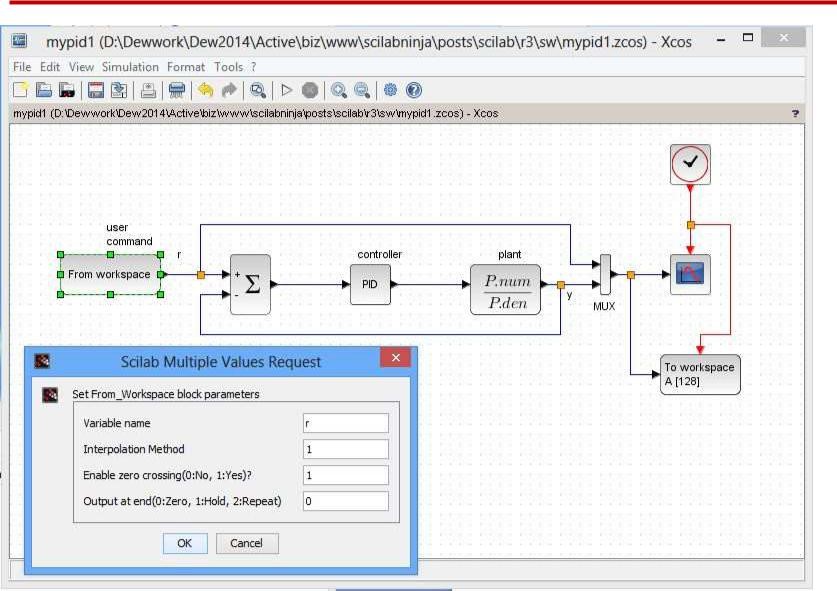

As a rule of thumb don't change the default step size. The step size h must be small to get a low error but if it is too small floating point errors will dominate by cancellation. Numerical approximation of derivatives is generally an unstable process.
Scilab derivative series#
If H is given in its default form the Taylor series of F(x) up to terms of second The second derivatives are computed by composition of first order derivatives. The directional derivatives of the components of F in the direction of The Jacobian is computed by approximating StaticCalciumRightKneeMuscles/ActuationDynamics.scilab, Compute the generalized Torques and derivative of tightness and forces of muscles BipActuators/. There are commonly 3 variations to do so, by means of forward Euler, backward Euler, and trapezoidal methods. Numerical approximation of the first and second derivatives of a functionį: R^n -> R^m at the point x. It is quite common to modify the derivative term to an LPF filter, to make it less noisy A straightforward way to discretize this controller is to convert the integral and derivative terms to their discrete-time counterpart. : (optional) real matrix, orthogonal (default is eye(n,n)). >spoly (0,'s') ->p 1/s p 1 - s ->q derivat (p) q - 1 - 2 s External modules In this section, we review the external modules which are available for differenciation in Scilab. In the following session, we compute the first derivative of the polynomial p (s)1/s. H(:,:,k) is the classic Hessean matrix of the k-th component of F. The derivat function computes the derivatives of polynomials. H is a n x n matrix for m=1, and a n x n x m hypermatrix otherwise. The exact derivative can be computed analytically and the relative error is computed. H is a m x (nxn) block matrix : the classic Hessean matrices (of each component of F) are stacked by row (H = in scilab syntax). In the following Scilab script, we compute the derivative of an univariate quadratic function. : H is a m x (n^2) matrix in this form, the k-th row of H corresponds to the Hessean of the k-th component of F, given as the following row vector : : (optional) string, the form in which the Hessean will be returned. : (optional) integer, the order of the finite difference formula used to approximate the derivatives (order = 1,2 or 4, default is order=2 ). : (optional) real, the stepsize used in the finite difference approximations. contfrm transfer to controllable state-space. PID stands for Proportional, Integral, and Derivative. armac Scilab description of an armax process. Module 4: PID Control This article is contained in Scilab Control Engineering Basics study module.

arma2ss transform an armax data structure into state space representation. , pk being any scilab objects (matrices, lists.). arma2p extract polynomial matrices from ar representation. : a Scilab function F: R^n -> R^m or a list(F,p1.,pk), where F is a scilab function in the form y=F(x,p1.,pk), p1. What does the third derivative tell you?.
Scilab derivative how to#

Velocity is the first derivative of the position function.Is velocity the first or second derivative?.If you are dealing with compound functions, use the chain rule. multipliers and divisors), derive each component separately, carefully set the rule formula, and simplify. To calculate derivatives start by identifying the different components (i.e.


 0 kommentar(er)
0 kommentar(er)
